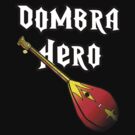Sheep Head Isn’t Bad Either
By sheer coincidence I had another culinary adventure this weekend.
I had heard of the tradition of cutting бас, a sheep’s head on major occasions. On large holidays such as a wedding or a major job promotion or even on Nauryz, a family may choose to slaughter a sheep. While the meat is taken for beshbarmak, the head is boiled and served to the oldest member of the party. He must then carve and distribute the parts of the head. The ears are traditionally the most delicious part and thus reserved for the guest of honor. The eyeballs, brain, mouth and nostrils are also distributed, often with some kind of meaning. For example, the eyes may be given to a wise person because he can see into the heart of a situation. The brain may be given to a student who is studying for exams, and so on. The rest of the meat is then distributed among all the guests.
I knew about this tradition. Once I had come late and missed my chance to see it done. Once I had been at a wedding party and seen the head go by my table on its way to the head table. Upon seeing my interest, the waiter kindly reserved me a piece of meat–which was pretty good. Tasted like sheep, surprisingly enough.
But this Sunday, I got to see the sheep head cut up close. The occasion was a very traditional Kazakh feast. We sat on the floor on cushions. Most of the women ate separately from the men, since they first served us and then would eat only when we were done. Besides the beshbarmak, the food was mostly nuts and dried fruits, as befits a traditional southern Kazakh diet. There were forks but most people ate with their hands.
Feeling slightly out of place and desperately scared that I would do something wrong–I needn’t have worried because the company was kind and understanding–it took me a minute to realize that the old man next to me was carving away at a sheep head.* I was quite shocked when the ear landed on my plate and despite everyone’s assurances that I didn’t have to eat it, I decided I would at least take a bite. I did quickly whisper to my wife, “Should I gobble it up right away, or should I wait? What’s the etiquette here?” I guess the timing of eating it was not important.
It wasn’t bad tasting, but it was extremely soft and felt a bit strange. Like someone else had already chewed it so I swallowed my bite down before letting that train of thought develop. By the time I had gotten that down, I was handed a big chunk of fat on a bone (курдук) and was told that it was for a son-in-law (ку бала). And that the bone should be picked clean! This was later retracted as I was eyeing the last big chunk of fat and trying to figure out how to get the meat from between the bones, I was told, “Thank you, that’s enough.” I took another bite to make the point and gladly got down to meat and noodles!
So believe it or not, sheep ear and sheep fat is not as horrible as it might sound. It’s not something you would want everyday of course. But once in a while it can be done. And I am as ever amazed at the hospitality and kindness of Kazakhs who honor foreigners without making you feel uncomfortable or out of place.
* One of the interesting things I have noticed about “rituals” or “ceremonies” here is that they are rarely accompanied by some kind of announcement–as in a church the taking of Communion is announced by certain hymns. Nor are things met with ‘Ooohs’ and ‘Aaahs’ as a Christmas pudding might be. So one doesn’t always catch what is going on.









